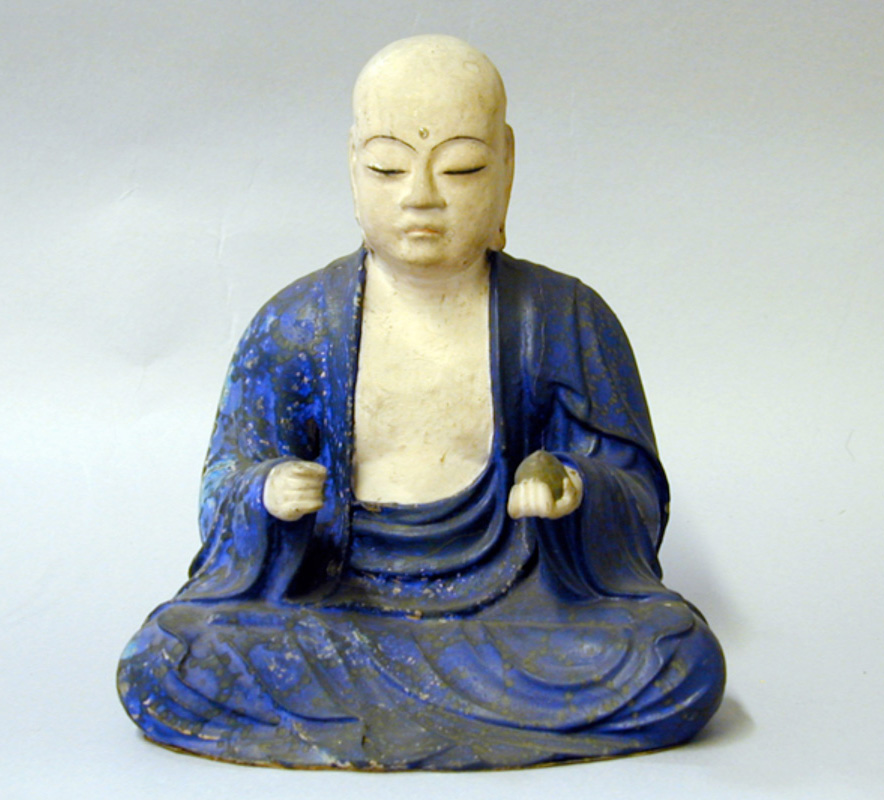Bald monk
Japan, 19th century or earlier
 Founding collection; 1884.66.35Tonsure is practised among the devotees of several world religions, as well as some mystics. In the Orthodox and Roman Christian churches, it has been known since the 7th century. In most contexts, tonsure symbolizes the individual's indifference to the conventions of everyday society and their renunciation of worldly concerns such as fashion and vanity.
Founding collection; 1884.66.35Tonsure is practised among the devotees of several world religions, as well as some mystics. In the Orthodox and Roman Christian churches, it has been known since the 7th century. In most contexts, tonsure symbolizes the individual's indifference to the conventions of everyday society and their renunciation of worldly concerns such as fashion and vanity.
This figure represents a Buddhist monk. Attitudes to hair vary between the various Buddhist sects. Some allow the presence of hair and even beards. In contrast, the 5th-century Theravada Buddhist scholar Buddhaghosa considered head hair one of man's many physical aspects to be 'repulsive', which grows 'as fungus do on a dung hill'. Shaven heads are also advocated by Zen Buddhism, the meditative school of Japanese Buddhism. Heads and faces are shaved with a kamisori (razor) upon admittance to the order and as often as necessary after that. This figure also wears a bindi, as worn by some Hindu and Buddhist followers.
Monks and priests of all Buddhist traditions wear robes in honour of the Buddha, who said to have worn a simple monk's robe all of his life, made out of patched pieced of donated garments. Traditionally Japanese Buddhist monks wear grey or black robes but this figure wears the blue robe of Thailand or China.
